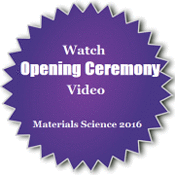
Anton Liopo
The University of Texas MD Anderson Cancer Center, USA
Title: Gold-based emerging nanomaterials for imaging and experimental cancer therapy
Biography
Biography: Anton Liopo
Abstract
Gold nanoparticles of different shape and size have been designed and applied as contrast-enhancing agents for various imaging techniques: optical coherence tomography, fluorescence imaging, optical microscopy, photoacoustic imaging and sensing; and recently, for experimental cancer therapy as enhancers of thermal and radiation modes. In the current presentation, we are focusing on different sides of gold nanorods (GNRs) applications, as well as their synthesis, functionalization, and specific targeting. The role of GNRs in comprehensive cancer diagnostics and treatment was analyzed. We have created the novel GNRs’ modifications of wide-ranging aspects ratio and size with high yield and quality. The GNRs were assessed by their toxicity for altered categories, such as amount of gold, surface area, optical density of their solutions and number of particles. GNRs have been reviewed as contrast agents with near-infrared absorption as highly efficient transformers of light energy into heat. Here we present the use of GNRs as plasmonic nanoparticles for selective photothermal therapy of human acute and chronicle leukemia cells using a near-infrared laser. We have investigated GNRs as potential enhancers of radiotherapy. We have demonstrated high impact of external surface chemistry, role of molecules size and thickness of surfactant layer for damage of cancer cells by electromagnetic radiation. GNRs were evaluated as theranostic agents for imaging, photothermal and radiation modalities. The results may impact pre-clinical GNRs’ applications, molecular imaging, and quantitative sensing of biological analytes.

